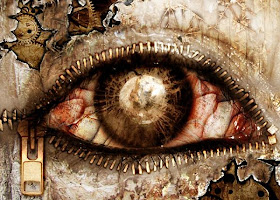Bosnian traditional cuisine has certain distinguishing characteristics. Dishes are not made with a roux; strong and hot spices are seldom used; spices are used in small amounts to enhance, not hide the taste of the meats and vegetables; food are lighter because most are cooked in their own juices rather than in fat; and a wide variety od sweets are consumed. Cookery styles do change, and contemporary cooking styles may modify these generalizations.
The primary home cook is the female head of the household, whose tasks are to plan and prepare the meals. This is especially the case in traditional regions of Bosnia and Herzegovina; however, in contemporary urban settings, more and more men can be found in the kitchen.
Hearth cooking was still viable into the 1970s in isolated mountain villages of western Bosnia. In one example, the stone hearth was approximately 10 feet long and 4 feet wide and stood about a foot high off the ground. It was backed by a stone wall; the smoke from the hearth escaped through the roof of the passageway thad divided the lived-in rooms and the storerooms. Wood was stacked at the end of the hearth; a fire burned in the center of it. When they had burned down, the glowing embers were swept aside, the hearth was carefully cleaned, and the ready bread dough was placed on the hot hearth and covered with a sač (a convex metal cover similar in function to a Dutch oven), which was then covered with the glowing embers from the fire. Pita and other foods were also baked under the sač. Foods such as eggs (čimbur) and soup (čorba) were cooked in pans over low fires. For long slow-cooking foods, a pot was hung from a heavy chain over the hearth.
Eventually, villagers acquired wood-burning sheet metal stoves with ovens. The sač is still available in Bosnia, and sometimes in Bosnian markets in the United States, though it is now seldom if ever used in daily cooking. (see:
http://www.youtube.com/watch?v=XSIzuAq2l8M)
In contemporary Bosnia and Herzegovina, both rural and urban stoves are electric, burn wood or coal, or use bottled gas. Grills and barbecues are popular, and Bosniaks can follow their passion for grilled meats. Spit-roasted sheep is everyone's favorite, and meat, sausage, and cheese are smoked in backyard smokehouses to provide popular accompaniments to beer.
A popular, cheap fast food you'll see everywhere is burek (BOO-rekh) – phyllo dough filled with meat or cheese, and bosnian pies (Pita) with spinach, or apples. The more familiar baklava is phyllo dough layered with honey and nuts.

Grilled meats are a staple of Bosnian cuisine. You'll most often see Ćevapčići (cheh-VAPH-chee-chee), or simply ćevap (cheh-VAHP) – minced meat formed into a sausage-link shape, then grilled.
Ražnjići (RAZH-nyee-chee) is small pieces of steak on a skewer, like a shish kebab.
Pljeskavica (plehs-kah-VEET-suh) is similar to ćevapčići, except the meat is in the form of a hamburger-like patty.
While Bosnia cuisine favors meat, a nice veggie complement is đuveč or đuveđ (JOO-vedge) – a spicy mix of stewed vegetables, flavored with tomatoes and peppers.
And you just can't eat any of this stuff without the ever-present condiment ajvar (EYE-var). Made from red bell pepper and eggplant, ajvar is like ketchup with a kick. Many Americans pack a jar of this distinctive sauce to remember the flavors of the Bosnia when they get back home. (You may even be able to find it at specialty grocery stores in the US-look for „eggplant/red pepper spread“) Particularly in Bosnia, another side-dish you'll see is the soft, spreadable and tasty cheese called kajmak.
Lepinje is a pita – like grilled bread, which is often wrapped around ćevapčići or pljeskavica to make a sandwich.

Ajvar, kajmak, lepinje, and diced raw onions are perfect complement to a „mixed grill“ of various meats on a big platter – the quintessence of Bosnia cuisine on one plate.
Sarajevsko Pivo, brewed in the capital, is the favored brand of beer.

Recipe for Bosanski Lonac:
Bosnian Meat Pot
Yield: serves 6 1 cup shredded cabbage 3 potatoes, peeled and cubed salt and pepper to taste
2 ½ pounds beef, or lamb, or any combination, cubed
8 cloves garlic, peeled 1 cup water
2 cups canned stewed tomatoes, divided
1 cup pearl onions, peeled, fresh, frozen, or canned (drained)
1 cup diced carrots
1 cup diced celery
3 sprigs fresh parsley, finely chopped or 2 teaspoons dried parsley flakes.
Equipment: Greased medium heat-proof carthenware casserole with cover or Dutch oven, heavy-duty aluminum foil, oven mitts, trivet. Preheat oven to 325° F.
1 . Spread shredded cabbage over bottom of greased medium heatproof earthenware casserole or Dutch oven. Layer potatoes over cabbage, and sprinkle with salt and pepper to taste. Add meat, whole garlic cloves, water, and 1 cup stewed tomatoes. Add onions, carrots, celery, and remaining 1 cup stewed tomatoes. Sprinkle with salt and pepper to taste and parsley flakes. Cover and seal with heavy-duty foil so no steam can escape while cooking.
2. Cook in oven for 3 ½ hours. Using oven mitts, carefully remove from the oven. Allow to rest 15 minutes before serving. To serve, take the pot to the table and place on a trivet. Using oven mitts, remove foil and lid in front of the guests, releasing all the appetizing aromas.

















